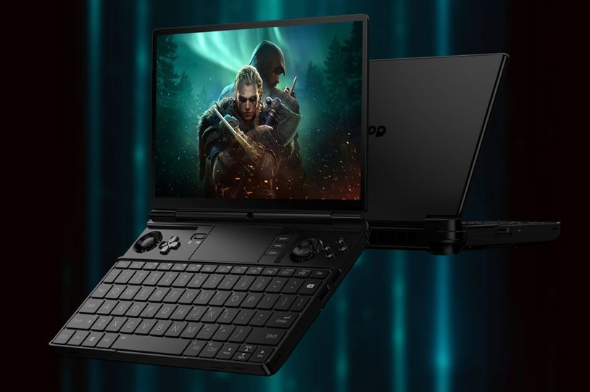Connection to DriversCloud Create a DriversCloud.com account Reset your DriversCloud.com password Account migration
GPD Win Max 2 : the Ryzen 7 6800U / Core i7-1260P confrontation turns largely to AMD's advantage
Two processors whose objective is to offer a more than correct graphics solution in order to fit more scenarios.
Only a few days ago, the GPD brand stood out from the mass of Steam Deck clones. Indeed, since the announcement of this console and PC hybrid by Valve, many companies have decided to follow suit. Well-known to fans of small machines, the company GPD was already offering this kind of hybrids long before Valve got interested in them, but in order to stand out, GPD also has significantly different machines in its catalog.
The Win Max looks more like a mini laptop with everything you need to use it in the same way: a screen that can be folded down, a keyboard for typing of course, but also a trackpad to emulate the mouse and multiple connectors to link external peripherals for a more comfortable use. Logically, the Win Max 2 that we announced only a few days ago takes up the main features of this previous machine. First of all, it has a 10.1-inch screen capable of a definition of 1600p. It also has two slots for SSDs in M.2 format and Thunderbolt 4, USB 3.2 or HDMI 2.1 connectors.
More interestingly, the Win Max 2 comes in two versions depending on whether you prefer AMD or Intel. In the first case, it is the very recent Ryzen 7 6800U that is used while in the second, GPD trusts the Core i7-1260P. What both processors have in common is that they combine CPU cores with GPU cores so that it is not necessary to add a dedicated graphics card to enjoy the machine. However, the technical data published by AMD and Intel left little doubt as to the outcome of the duel between the two processors. Today we have the confirmation.
Look I don't know who needs to hear this, but if you were buying a GPD Win Max 2 in a few hours, please only get the 6800U. Intel does have some slightly faster single threaded. but goodness gracious it's just getting slaughtered. pic.twitter.com/GtEoaBXGde
- Cary Golomb (@carygolomb) July 6, 2022
Through a rather complete video test of the Win Max 2, The Phawx actually presents the two versions of the GPD machine. He used games like Arkham Knight, Borderlands 3, Cyberpunk 2077 or Forza Horizon and, each time, the opposition is short: the Ryzen 7 6800U is always well ahead of the Core i7-1260P. More interestingly, it has the luxury of outperforming its competitor even when its TDP is much lower than that of the Intel chip. The RDNA 2 architecture that gives its GPU cores is much stronger than the Xe-LP used by Intel.
Fortunately for Intel, there are some tools on which its processor is more comfortable. In fact, as soon as we stop talking about video games - so RDNA 2 / Xe-LP are no longer used - and we insist on single-threaded tasks, the Ryzen 7 6800U is in more difficulty. However, the latter adds a new string to its bow when it comes to energy efficiency and autonomy. The Phawx still has to study Intel's results in this area, but in the end, except for specific needs, it seems more interesting to turn to the AMD version of the Win Max 2.





